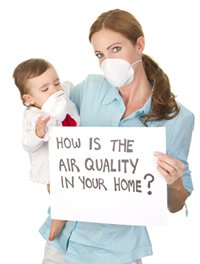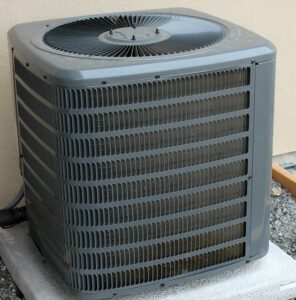
Understanding Indoor Air Quality
Many people assume that air pollution is more prominent outdoors than indoors. After all, emissions from power plants, motor vehicles and outdoor machines are bound to be of a larger scale outside your premises rather than indoors.
Unfortunately, those outdoor elements aren’t the worst we face. The air that we breathe indoors could actually be of poorer quality than that outside. Pollutants from electrical appliances, heating and cooling systems, household cleaning products, pet dander and cigarettes all affect indoor air quality, which could have a significant influence on your health and general well-being.

Some of the most common health concerns that occur due to exposure to poor indoor air quality include asthma, respiratory infections and allergic reactions. In some cases, these health problems may manifest themselves years after exposure.
Considering this, it’s essential to learn about the symptoms and causes of poor indoor air quality to protect your household from these ailments and conditions.
What Are the Symptoms of Poor Indoor Air Quality?
The symptoms of poor indoor air quality vary from person to person depending on age and other preexisting medical conditions. The most notable signs you should watch out for include:
- Skin rashes
- Irritation of the throat, nose or eyes
- Reddening of the skin
- Dry skin
- Dry mucous membranes
- Dizziness
- Excess fatigue
- Sleepiness
- Persistent headache and mental fatigue
- Hypersensitivity
What Causes Poor Indoor Air Quality?
Anything that releases harmful gases or particles into the air is a culprit of poor indoor air quality. Some of the most common pollutant sources include:
- Household cleaning supplies
- Pesticides
- Cigarette smoke
- Smoke from fireplaces
- Fuel-burning combustion appliances
- Deteriorating building materials such as asbestos
- Formaldehyde found in the adhesive of plywood, carpets and upholstery
- Polyurethane found in wooden furniture and floors
- Polybrominated biphenyl and polychlorinated biphenyl found in consumer products such as monitors and televisions
- Mold and mildew
- Pet dander
- Dust mites and pollen
How to Fix Poor Indoor Air Quality

Improving indoor air quality depends on the magnitude of the problem. If the building has inadequate ventilation, you can fix the problem by installing an appropriate air conditioning system and ensuring that the air intakes for each room are working optimally. Here are a few additional ways you can fix poor indoor air quality:
- Invest in an air purifier for your home or office
- Open your windows to allow fresh outdoor air to circulate indoors
- Inspect the air intakes to determine whether they’re functioning optimally
- Clean and maintain air ducts and intakes regularly
- Avoid using cleaning supplies that contain harsh chemicals
- Schedule renovation projects for times that are ideal for all occupants
- Avoid smoking tobacco products while indoors
- Buy a humidifier to regulate humidity levels
Schedule an Appointment With Ranck for Air Quality Expertise
While there are steps you can take to ease the issue, dealing with indoor air pollutants is a job best left to the experts. Ranck offers viable solutions that can help eliminate up to 99.98% of indoor pollutants. Call us today at 888-997-2625 or contact us online to restore the quality of air in your indoor spaces. We would be glad to help you breathe easier!